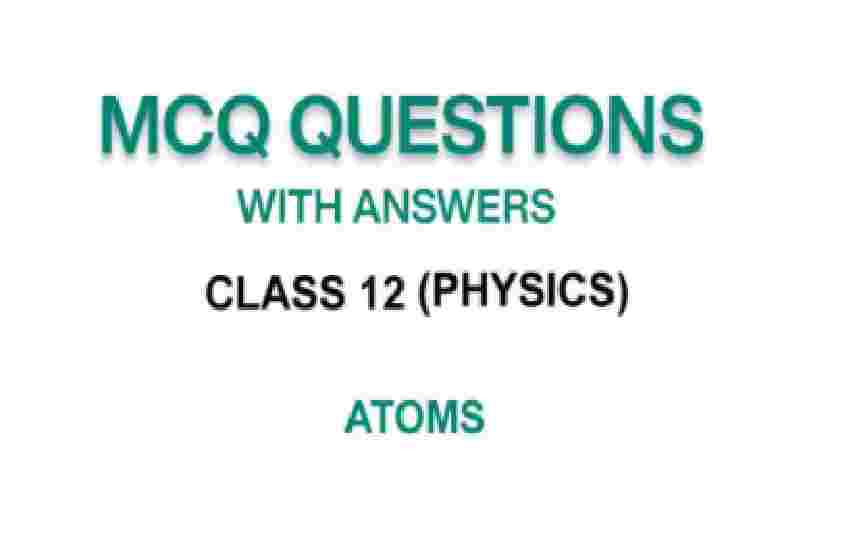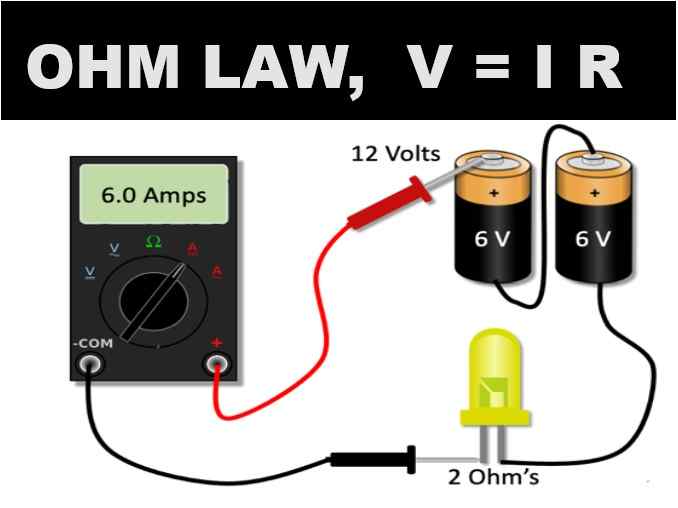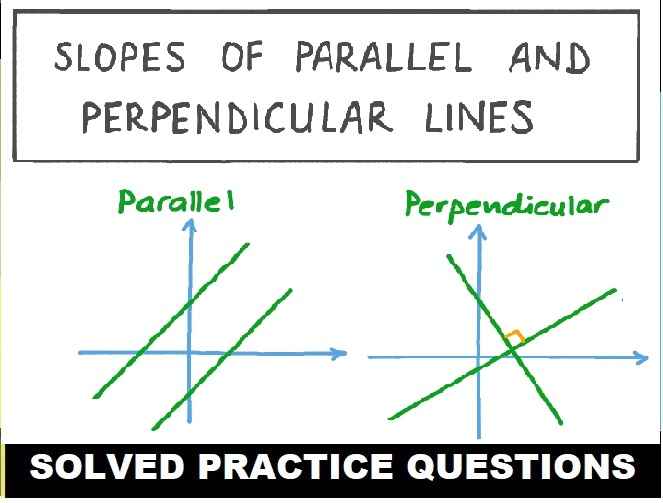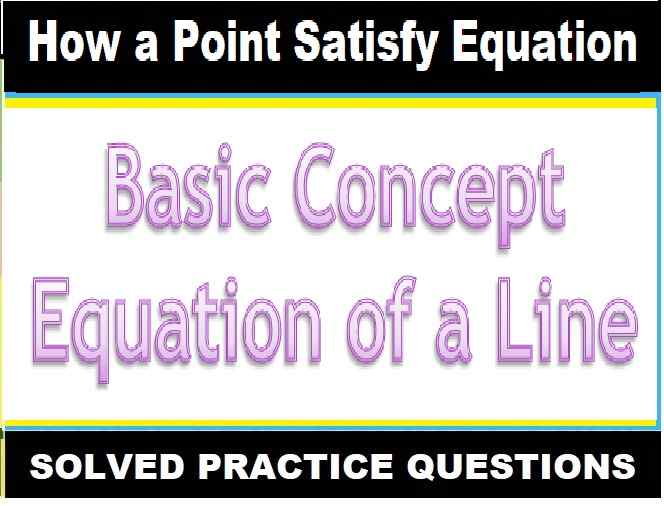Hydrogen Atoms MCQs: Origin of Spectra Bohr’s Theory for ISC Class 12 Physics . These MCQs / Objective Type Questions is based on latest reduced syllabus according 2021-22 session on bifurcated pattern. Main motto of MCQ Type Question is cracking the next upcoming Sem-2 exam of council. Visit official website CISCE for detail information about ISC Class-12 Physics.
Hydrogen Atoms MCQs: Origin of Spectra Bohr’s Theory for ISC Class 12 Physics

| Board | ISC |
| Class | 12th (XII) |
| Subject | Physics |
| Chapter | Atoms, Origin of Spectra : Bohr’s Theory of Hydrogen Atom |
| Syllabus | on bifurcated syllabus (after reduction) |
| Session | 2021-22 |
| Bifurcated | Sem-2 |
| Topic | MCQs / Objective Type Question |
Atoms, Origin of Spectra : Bohr’s Theory of Hydrogen Atom ISC Class 12 Physics
Question 1. The energy of a hydrogen atom in the ground state is -13.6 eV. The energy of a He+ ion in the first excited state will be
(a) -6.8 eV
(b) -13.6 eV
(c) -27.2 eV
(d) -54.4 eV
Answer: (b) -13.6 eV
Question 2. Who explained the splitting of special lines in magnetic field?
(a) Zeeman
(b) Bohr
(c) Summerfield
(d) Einstein
Answer: (a) Zeeman
Question 3. The Schroedinger wave equation is a
(a) Non-linear differential equation
(b) Linear differential equation
(c) Second order equation in time
(d) First order equation in space
Answer: (b) Linear differential equation
Question 4. The principle that a quantum orbital cannot be occupied by more than two electrons was given by:
(a) Pauli
(b) Millikan
(c) Hund
(d) None of these
Answer: (a) Pauli
Question 5. Transmutation of nuclei was discovered by:
(a) Rutherford
(b) Becquerel
(c) Pauli
(d) None of these
Answer: (a) Rutherford
Question 6. The transition of electron from n = 4, 5, 6, ………. to n = 3 corresponds to
(a) Lyman series
(b) Balmer series
(c) Paschen series
(d) Bracket series
Answer: (c) Paschen series
Question 7. When an electron in an atom goes from a lower to a higher orbit, its
(a) kinetic energy (KE) increases, potential energy (PE) decreases
(b) KE increases, PE increases
(c) KE decreases, PE increases
(d) KE decreases, PE decreases
Answer: (c) KE decreases, PE increases
Question 8. When electron jumps from n = 4 to n = 2 orbit, we get
(a) second line of Lyman series
(b) second line of Balmer series
(c) second line of Paschen series
(d) an absorption line of Balmer series
Answer: (b) second line of Balmer series
Question 9. In Geiger-Marsden scattering experiment, the trajectory traced by an a-particle depends on
(a) number of collision
(b) number of scattered a-particles
(c) impact parameter
(d) none of these
Answer: (c) impact parameter
Question 10. According to Bohr’s model of hydrogen atom
(d) the angular momentum of the electron is quantised.
Answer: (d) the angular momentum of the electron is quantised.
Question 11. What is the order of the radius of an electron orbit in a hydrogen atom?
(a) 10-8 m
(b) 10-9 m
(c) 10-11 m
(d) 10-13 m
Answer: (c) 10-11 m
Question 12. The number of waves, contained in unit length of the medium is called
(a) Wave number
(b) Wavelength
(c) Amplitude
(d) Frequency
Answer: (a) Wave number
Question 13. The Balmer series for the H-atom can be observed
(a) if we measure the frequencies of light emitted when an excited atom falls to the ground state
(b) if we measure the frequencies of light emitted due to transitions between excited states and the first excited state
(c) in any transition in a H-atom
(d) None of these
Answer: (b) if we measure the frequencies of light emitted due to transitions between excited states and the first excited state
Question 14. According to classical theory, the circular path of an electron in Rutherford atom model is
(a) spiral
(b) circular
(c) parabolic
(d) straight line
Answer: (a) spiral
Question 15. In Bohr’s model of an atom which of the following is an integral multiple of h2π?
(a) Kinetic energy
(b) Radius of an atom
(c) Potential energy
(d) Angular momentum
Answer: (d) Angular momentum
Question 16. In a hydrogen atom, which of the following electronic transitions would involve the maximum energy change
(a) n = 2 to n = 1
(b) n = 3 to n = 1
(c) n = 4 to n = 2
(d) n = 3 to n = 2
Answer: (b) n = 3 to n = 1
Question 17. The first model of atom in 1898 was proposed by
(a) Ernst Rutherford
(b) Albert Einstein
(c) J.J. Thomson
(d) Niels Bohr
Answer: (c) J.J. Thomson
Question 18. If the radius of the 1st orbit of hydrogen is ‘r’, then the radius of the 3rd orbit of hydrogen is ________.
(a) 9r
(b) r1 / 3
(c) 3r
(d) r3
Answer: (a) 9r
Question 19. Given the value of Rydberg constant is 107 m–1, the wave number of the last line of the Balmer series in hydrogen spectrum will be
(a) 0.25 × 107 m–1
(b) 2.5 × 107 m–1
(c) 0.025 × 104 m–1
(d) 0.5 × 107 m–1
Answer: (a) 0.25 × 107 m–1
Question 20. Which source is associated with a line emission spectrum?
(a) Electric fibre
(b) Neon street Sign
(c) Red traffic light
(d) Sun
Answer: (b) Neon street Sign
Question 21. The wavelength of an electron revolving in the 3rd orbit of He+ is ‘λ’. If the radius of first bohr orbit in H atom is ‘x’, then λ is equal to
(a) 6πx
(b) 3πx
(c) 4πx
(d) 9πx
Answer: (b) 3πx
Question 22. The Lyman transitions involve
(a) largest changes of energy
(b) smallest changes of energy
(c) largest changes of potential energy
(d) smallest changes of potential energy
Answer: (a) largest changes of energy
Question 23. The fact that electric charges are integral multiples of the fundamental electronic charge was proved experimentally by
(a) Planck
(b) J.J. Thomson
(c) Einstein
(d) Millikan
Answer: (d) Millikan
Question 24. The energy equivalent to mass defect is called :
(a) binding energy
(b) internal energy
(c) external energy
(d) enthalpy
Answer: (a) binding energy
Question 25. When hydrogen atom is in its first excited level, it’s radius is
(a) four times, it ground state radius
(b) twice times, it ground state radius
(c) same times, it ground state radius
(d) half times, it ground state radius.
Answer: (a) four times, it ground state radius
Question 26. The energy equivalent to one atomic mass unit is :
(a) 1.6 × 10-19 J
(b) 6.02 × 1023 J
(c) 9.31 MeV
(d) 931 MeV
Answer: (d) 931 MeV
Question 27. In Bohr model of the hydrogen atom, the energy of the electron in its lowest orbit is:
(a) Infinite energy
(b) Maximum energy
(c) Minimum energy
(d) Zero energy
Answer: (c) Minimum energy
Question 28. The concept of electron spin was introduced by:
(a) Becquerel
(b) Goudsmit
(c) Millikan
(d) Uhlenbeek and Goudsmit
Answer: (d) Uhlenbeek and Goudsmit
Question 29. Which of the following series in the spectrum of hydrogen atom lies in the visible region of the electromagnetic spectrum?
(a) Paschen series
(b) Balmer series
(c) Lyman series
(d) Brackett series
Answer: (b) Balmer series
Question 30. For ionization of excited Hydrogen atom, the, required energy is:
(a) a little less than 13.6
(b) equal to 13.6
(c) more than 13.6
(d) 3.4 or less
Answer: (d) 3.4 or less
Question 31. Which of the following parameters is the same for all hydrogen-like atoms and ions in their ground states?
(d) Orbital angular momentum of the electron
Answer: (d) Orbital angular momentum of the electron
Question 32. The spectrum obtained from a sodium vapour lamp is an example of
(a) band spectrum
(b) continuous spectrum
(c) emission spectrum
(d) absorption spectrum
Answer: (c) emission spectrum
Question 33. To explain his theory, Bohr used
(a) conservation of linear momentum
(b) conservation of angular momentum
(c) conservation of quantum frequency
(d) conservation of energy
Answer: (b) conservation of angular momentum
Question 34. The angular speed of the electron in the nth orbit of Bohr hydrogen atom is
Answer: (d) inversely proportional to n3
Question 35. What will be the longest wavelength in the Balmer series of hydrogen spectrum?
(a) 6557 × 10-10 m
(b) 5557 × 10-10 m
(c) 9557 × 10-10 m
(d) 1557 × 10-10 m
Answer: (a) 6557 × 10-10 m
Question 36. Natural radioactivity was discovered by:
(a) Joliot
(b) Becquerel
(c) Pauli
(d) None of these
Answer: (b) Becquerel
Question 37. In the following transitions of the hydrogen atom, the one which gives an absorption line of highest frequency is
(a) n = 1 to n = 2
(b) n = 3 to n = 8
(c) n = 2 to n = 1
(d) n = 8 to n = 3
Answer: (a) n = 1 to n = 2
Question 38. Which of the following spectral series falls within the visible range of electromagnetic radiation?
(a) Lyman series
(b) Balmer series
(c) Paschen seriee
(d) Pfund series
Answer: (b) Balmer series
Question 39. Choose the correct statement regarding Bohr’s theory
(a) The electrons move around the nucleus in certain circular stable orbits without emitting radiations.
(b) The angular momentum of electrons in the Bohr orbit always remains constant.
(c) The angular momentum in first orbit is less than that in third Bohr orbit.
(d) All are correct.
Answer: (d) All are correct.
Question 40. Hydrogen atom excites energy level from fundamental state to n = 3. Number of spectral lines according to Bohr, is
(a) 4
(b) 3
(c) 1
(d) 2
Answer: (b) 3
Question 41. Which of the following is quantised according to Bohr’s theory of hydrogen atom
(a) Linear momentum of electron
(b) Angular momentum of electron
(c) Linear velocity of electron
(d) Angular velocity of electron
Answer: (b) Angular momentum of electron
Question 42. Bohr’s atom model assumes_______
(a) The nucleus is of infinite mass and is at rest.
(a) Electrons in a quantised orbit will not radiate energy.
(a) mass of the electron remains constant.
(a) All the above conditions.
Answer: (a) All the above conditions.
Question 43. What is the energy of the electron revolving in third orbit expressed in eV?
(a) 1.51 eV
(b) 3.4 eV
(c) 4.53 eV
(d) 4 eV
Answer: (a) 1.51 eV
Question 44. In the Geiger-Marsden scattering experiment the number of scattered particles detected are maximum and minimum at the scattering angles respectively at
(a) 0° and 180°
(b) 180° and 0°
(c) 90° and 180°
(d) 45° and 90°
Answer: (a) 0° and 180°
Question 44. Which of the following atoms spectrum is suitable for Bohr’s Model
(a) Be
(b) He +
(c) Li +
(d) Li
Answer: (b) He +
–: End of Hydrogen Atoms MCQs: Origin of Spectra Bohr’s Theory of Hydrogen Atom :–
-: also visit :-
- ISC Sem-2 Question Bank Class-12
- Sem-2 ISC Specimen Paper for Class-12
- ISC Class-12 Textbook Solutions ,Syllabus, Solved Paper
- Previous Year Question Paper for ISC Class-12
Please share with your ISC friends if it is helpful
Thanks


